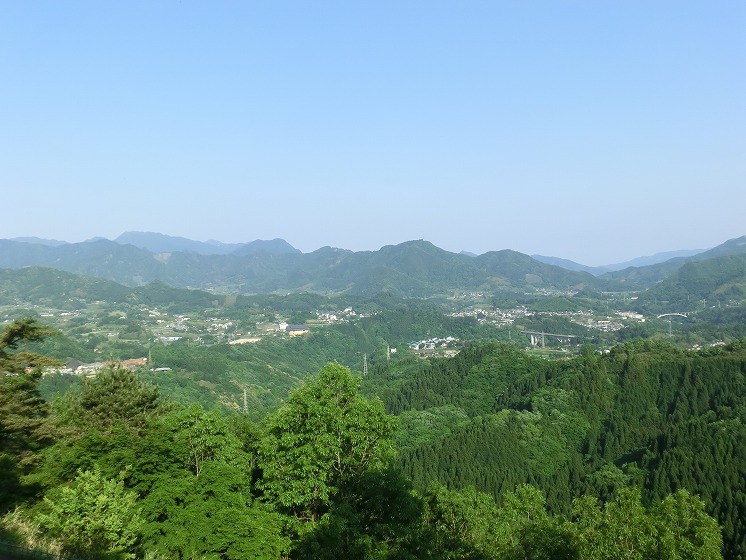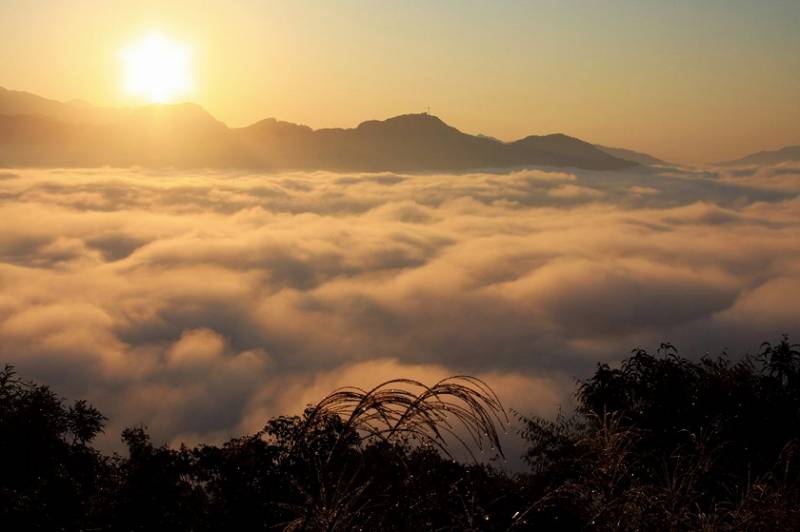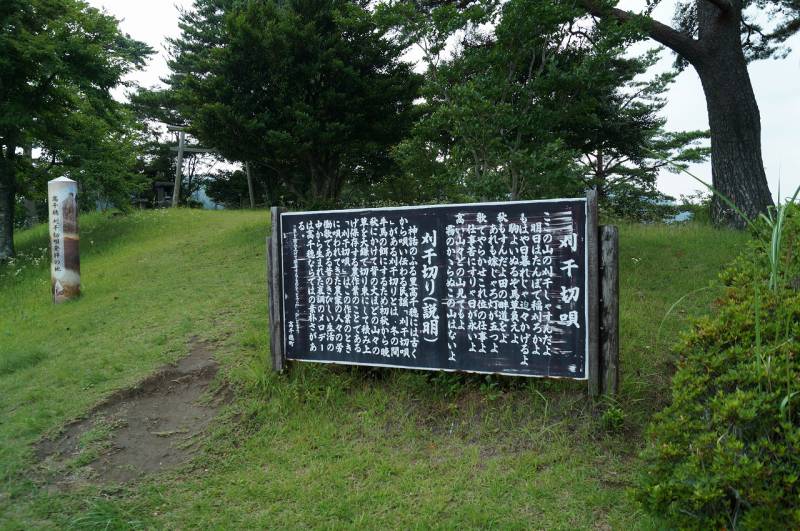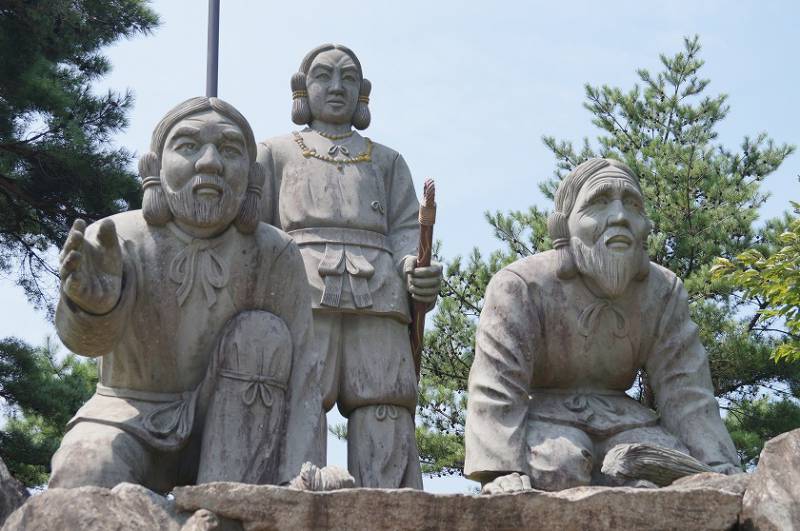2019 / 07 / 09
Sightseeing
Kunimigaoka
Kunimigaoka
Kunimigaoka (translated as “Country Gazing Hill”) derives its name from a legend that Tateiwatatsu no Mikoto, grandson of Japan’s mythical first emperor, stopped here on his way to assume governorship of the ancient Tsukushi Province (located in the northern part of Kyushu). From this hilltop, he could see in all directions the land that he was to rule, and thus the name was given.
Geographical Location and Surroundings

From a height of 513 meters, Kunimigaoka’s panoramic view features the renowned mountain ranges and valleys of Kyushu. To the east lies the broad Takachiho Basin, the setting of many Japanese myths. Mt. Aso, the largest active volcano in Japan, can be seen in the west. Kyushu’s mountainous region is off to the north, including Mt. Sobo with a peak of 1,756 meters. And finally, in the south is Mt. Futagami, one mountain said to be the location of the descent of many kami deities to earth, from which extend the Shiiba Mountains. Visible in the area surrounding Kunimigaoka are the famed rice terraces of Takachiho.
Sea of Clouds

Between September and November, Kunimigaoka is commonly visited as a place to view a “sea of clouds,” a natural phenomenon of cloud cover settling over the Takachiho Basin. Viewed from above, this creates the image of being afloat on a misty ocean. This phenomenon is most likely to occur on still, windless mornings when there is a temperature inversion over 15°C that traps sufficient humidity.
Folk Song “Kariboshi Kiri Uta”

Autumn’s changing colors as seen from Kunimigaoka are linked to a well-loved folk song called the “Kariboshi Kiri-Uta,” which is believed to originate in the Takachiho area. The title refers to the process of cutting and harvesting hay. This work song was sung in the past by laborers gathering feed in the fields for livestock before winter, and its somber melody conveys a sense of the isolation of rural life long ago.
Ninigi and Kunimigaoka

At the base of Kunimigaoka is a statue of Ninigi no Mikoto, or Ninigi, who is said to have descended from the heavens to rule Japan. According to a legend from the Takachiho region, Ninigi and his procession encountered an impenetrable fog and lost sight of the way as they descended to earth. Two earthly beings named Ōkuwa and Okuwa then appeared and urged Ninigi to take rice from the stalks he held in his hand and scatter this rice over the land. Upon doing so, the fog lifted and Ninigi and his entourage arrived safely at their destination. The statue commemorates this legend.




